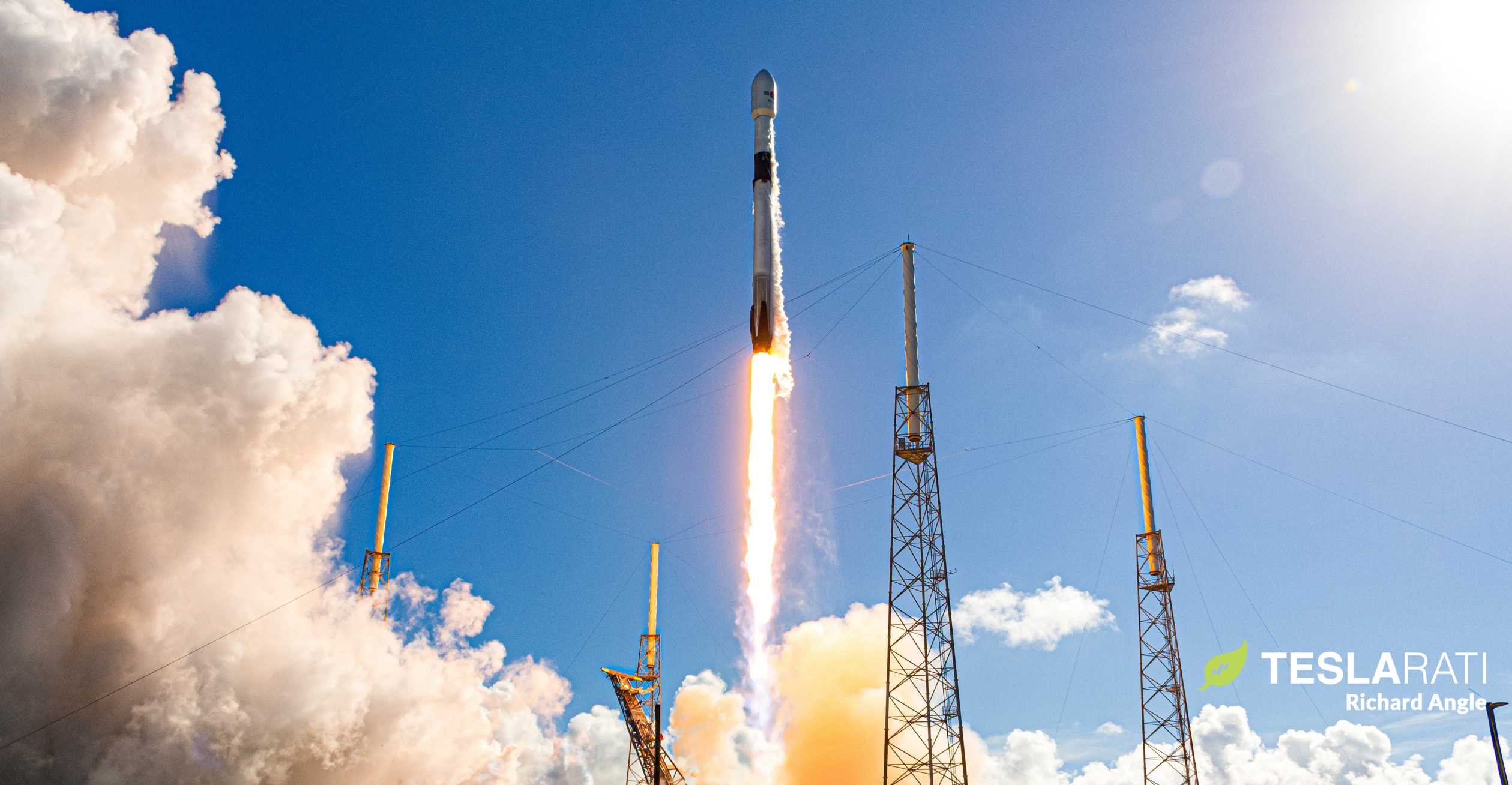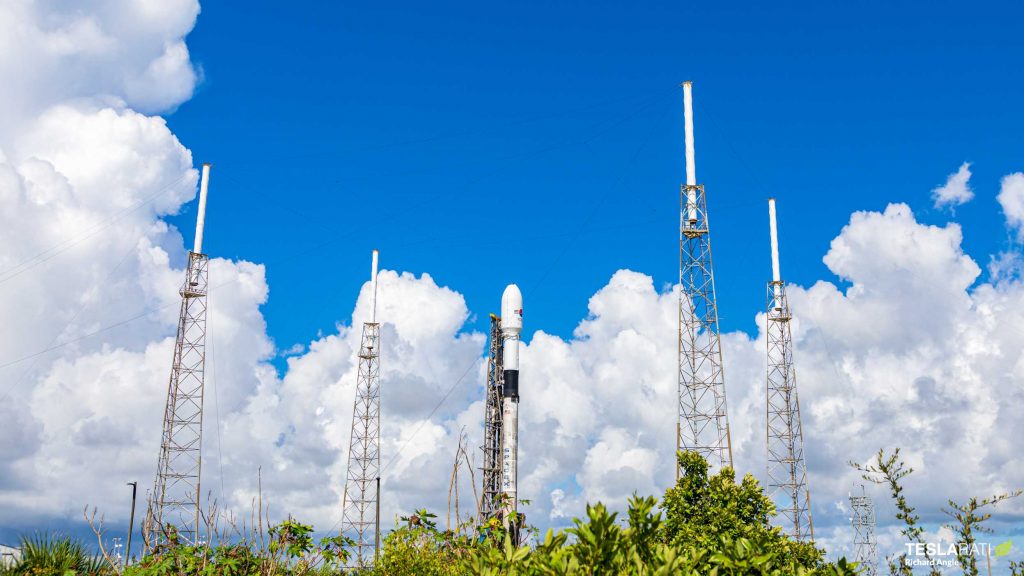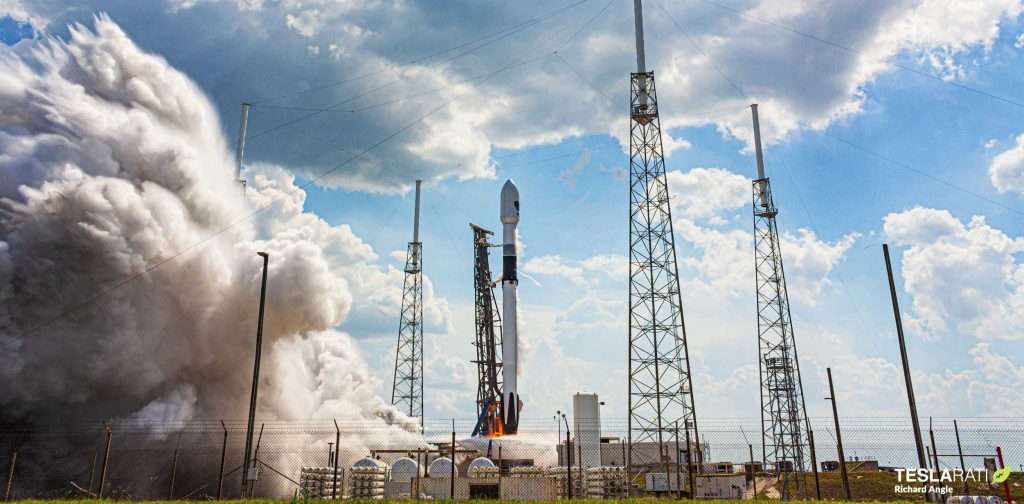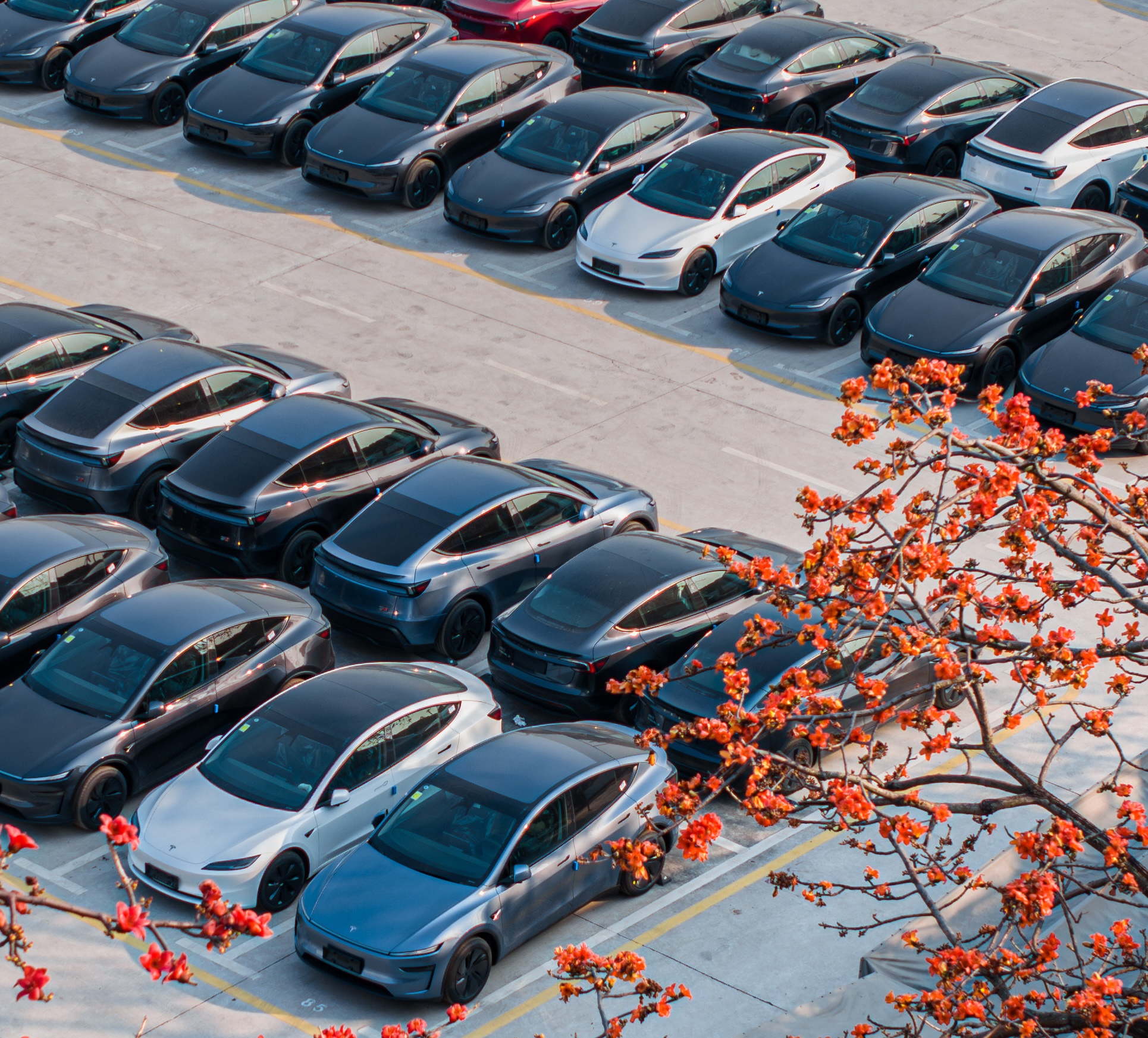

News
SpaceX go for Starlink launch, landing as ULA rocket delays persist
SpaceX is on track for Falcon 9’s latest Starlink launch and landing later today as delays continue to hamper a United Launch Alliance (ULA) rocket meant to lift off more than a month ago.
In fact, an almost identical scenario played out a month ago as SpaceX and ULA coincidentally aligned to attempt two launches less than a day apart. The pad hardware supporting ULA’s Delta IV Heavy NROL-44 mission suffered several delays on August 26th and 27th, followed by a dramatic post-ignition launch abort on August 29th. Throughout, SpaceX effectively had to sit on its hands and wait for permission to launch Falcon 9’s SAOCOM 1B mission. Historically, it’s been safe to assume that a ULA mission – particularly one like NROL-44 – would unilaterally take precedence over a SpaceX launch, forcing the company to wait indefinitely until the range was clear.
Instead, in a major twist, SpaceX received permission to launch – and ultimately did launch – SAOCOM 1B on August 30th with ULA’s Delta IV Heavy and its multibillion-dollar NROL-44 payload still on the launch pad. In essence, one or several stakeholders in the military mission have become confident enough in the reliability of SpaceX’s rockets to no longer perceive a nearby Falcon launch as a major risk. Now, just a month after the development, SpaceX appears to be on track to repeat the feat.

Three days after SAOCOM 1B lifted off from Cape Canaveral Air Force Station (CCAFS) Launch Complex 40 (LC-40), a separate Falcon 9 rocket launched SpaceX’s 12th Starlink mission (Starlink-11) from Kennedy Space Center (KSC) Launch Complex 39A (Pad 39A). Starlink-12 is also scheduled to launch no earlier than (NET) 10:22 am EDT (14:22 UTC), September 28th from Pad 39A, a bit less than six miles (9.5 km) north of the ULA rocket and NROL-44 satellite at LC-37.
SAOCOM 1B was such a surprise because the unique southerly trajectory saw Falcon 9 fly almost directly above LC-37, meaning that an in-flight failure could have very likely showered ULA’s pad, rocket, and payload with debris. LC-40, however, is just a little over two miles (3.5 km) north of LC-37. In other words, a Starlink launch heading northeast from Pad 39A is clearly of little concern to ULA or the NROL-44 launch customer, particularly after SAOCOM 1B was allowed to launch under far riskier conditions.

Instead, the real test of the SAOCOM 1B precedent will come when SpaceX prepares for the mission scheduled after Starlink-12 – the company’s third launch of an upgraded GPS III satellite (SV04) for the US military. As of now, ULA’s next NROL-44 launch attempt is tentatively scheduled around midnight (~04:00 UTC) on September 29th. Shortly thereafter, Falcon 9 is scheduled to launch GPS III SV04 (from LC-40) as early as 9:55 pm EDT (01:55 UTC) that same day.
Given the sheer number of difficulties ULA has had with LC-37 pad systems on this launch attempt, it’s reasonable to assume that NROL-44 will slip beyond September 29th. If that happens, stakeholders will once again have to decide if SpaceX can launch two miles to the north or has to wait for ULA. Either way, tune in tomorrow morning to catch SpaceX’s Starlink-12 launch webcast. Weather at Kennedy Space Center is currently 60% go for launch.
Check out Teslarati’s Marketplace! We offer Tesla accessories, including for the Tesla Cybertruck and Tesla Model 3.

News
Tesla dominates in the UK with Model Y and Model 3 leading the way

Tesla is dominating in the United Kingdom so far through 2025, and with about two weeks left in the year, the Model Y and Model 3 are leading the way.
The Model Y and Model 3 are the two best-selling electric vehicles in the United Kingdom, which is comprised of England, Scotland, Wales, and Northern Ireland, and it’s not particularly close.
According to data gathered by EU-EVs, the Model Y is sitting at 18,890 units for the year, while the Model 3 is slightly behind with 16,361 sales for the year so far.
The next best-selling EV is the Audi Q4 e-tron at 10,287 units, lagging significantly behind but ahead of other models like the BMW i4 and the Audi Q6 e-tron.
GOOD NEWS 🇬🇧 Tesla is absolutely crushing the UK electric vehicle market in 2025 💥
The numbers are in, and the dominance is clear. With an impressive amount of 42,270 vehicles delivered year-to-date, the brand now commands a solid 9.6% market share of the total auto market 🆒… pic.twitter.com/dkiGX9kzd0
— Ming (@tslaming) December 18, 2025
The Model Y has tasted significant success in the global market, but it has dominated in large markets like Europe and the United States.
For years, it’s been a car that has fit the bill of exactly what consumers need: a perfect combination of luxury, space, and sustainability.
Both vehicles are going to see decreases in sales compared to 2024; the Model Y was the best-selling car last year, but it sold 32,610 units in the UK. Meanwhile, the Model 3 had reached 17,272 units, which will keep it right on par with last year.
Tesla sold 50,090 units in the market last year, and it’s about 8,000 units shy of last year’s pace. It also had a stronger market share last year with 13.2 percent of the sales in the market. With two weeks left in 2025, Tesla has a 9.6 percent market share, leading Volkswagen with 8 percent.
The company likely felt some impact from CEO Elon Musk’s involvement with the Trump administration and, more specifically, his role with DOGE. However, it is worth mentioning that some months saw stronger consumer demand than others. For example, sales were up over 20 percent in February. A 14 percent increase followed this in June.
News
Tesla Insurance officially expands to new U.S. state
Tesla’s in-house Insurance program first launched back in late 2019, offering a new way to insure the vehicles that was potentially less expensive and could alleviate a lot of the issues people had with claims, as the company could assess and repair the damage itself.

Tesla Insurance has officially expanded to a new U.S. state, its thirteenth since its launch in 2019.
Tesla has confirmed that its in-house Insurance program has officially made its way to Florida, just two months after the company filed to update its Private Passenger Auto program in the state. It had tried to offer its insurance program to drivers in the state back in 2022, but its launch did not happen.
Instead, Tesla refiled the paperwork back in mid-October, which essentially was the move toward initiating the offering this month.
BREAKING: Tesla Insurance has just officially launched in Florida.
This is the first new state to receive @Tesla Insurance in more than 3 years. In total, Tesla insurance is now available in 13 U.S. states (map in thread below of all the states).
Tesla Insurance in Florida uses… pic.twitter.com/bDwh1IV6gD
— Sawyer Merritt (@SawyerMerritt) December 17, 2025
Tesla’s in-house Insurance program first launched back in late 2019, offering a new way to insure the vehicles that was potentially less expensive and could alleviate a lot of the issues people had with claims, as the company could assess and repair the damage itself.
It has expanded to new states since 2019, but Florida presents a particularly interesting challenge for Tesla, as the company’s entry into the state is particularly noteworthy given its unique insurance landscape, characterized by high premiums due to frequent natural disasters, dense traffic, and a no-fault system.
Annual average premiums for Florida drivers hover around $4,000 per year, well above the national average. Tesla’s insurance program could disrupt this, especially for EV enthusiasts. The state’s growing EV adoption, fueled by incentives and infrastructure development, aligns perfectly with Tesla’s ecosystem.
Moreover, there are more ways to have cars repaired, and features like comprehensive coverage for battery damage and roadside assistance tailored to EVs address those common painpoints that owners have.
However, there are some challenges that still remain. Florida’s susceptibility to hurricanes raises questions about how Tesla will handle claims during disasters.
Looking ahead, Tesla’s expansion of its insurance program signals the company’s ambition to continue vertically integrating its services, including coverage of its vehicles. Reducing dependency on third-party insurers only makes things simpler for the company’s automotive division, as well as for its customers.
News
Tesla Full Self-Driving gets sparkling review from South Korean politician
“Having already ridden in an unmanned robotaxi, the novelty wasn’t as strong for me, but it drives just as well as most people do. It already feels like a completed technology, which gives me a lot to think about.”

Tesla Full Self-Driving got its first sparkling review from South Korean politician Lee So-young, a member of the country’s National Assembly, earlier this week.
Lee is a member of the Strategy and Finance Committee in South Korea and is a proponent of sustainable technologies and their applications in both residential and commercial settings. For the first time, Lee was able to utilize Tesla’s Full Self-Driving technology as it launched in the country in late November.
Her thoughts on the suite were complimentary to the suite, stating that “it drives just as well as most people do,” and that “it already feels like a completed technology.”
드디어 오늘, 서울에서 테슬라 FSD 체험 했습니다.
JiDal Papa님의 모델S 협찬에 힘입어^^ 파파님 정말 감사합니다.
국회 -> 망원시장 -> 홍익대 -> 국회 복귀 코스였고요.
이미 무인 로보택시를 타봐서 그런지 신기함은
덜했지만, 웬만한 사람만큼 운전을 잘하네요.이미 완성된 기술이라고… pic.twitter.com/8pAidHBpRG
— 이소영 국회의원 (Soyoung Lee) (@im_soyounglee) December 17, 2025
Her translated post says:
“Finally, today I got to experience Tesla FSD in Seoul. Thanks to the Model S sponsored by JiDal Papa^^, I’m truly grateful to Papa. The route was from the National Assembly -> Mangwon Market -> Hongik University -> back to the National Assembly. Having already ridden in an unmanned robotaxi, the novelty wasn’t as strong for me, but it drives just as well as most people do. It already feels like a completed technology, which gives me a lot to think about. Once it actually spreads into widespread use, I feel like our daily lives are going to change a lot. Even I, with my license gathering dust in a drawer, don’t see much reason to learn to drive a manual anymore.”
Tesla Full Self-Driving officially landed in South Korea in late November, with the initial launch being one of Tesla’s most recent, v14.1.4.
It marked the seventh country in which Tesla was able to enable the driver assistance suite, following the United States, Puerto Rico, Canada, China, Mexico, Australia, and New Zealand.
It is important to see politicians and figures in power try new technologies, especially ones that are widely popular in other regions of the world and could potentially revolutionize how people travel globally.








